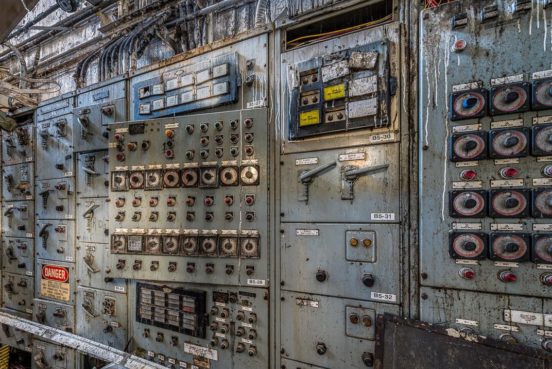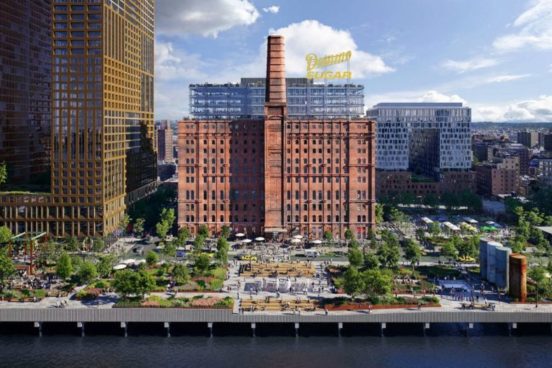A new book is giving voice to an old icon of Brooklyn, the Domino Sugar Refinery. The refinery is one of the most important settings in labor history, but it is set to be remade as part of the gentrification known as the Domino Sugar project in Williamsburg. The first new building has just opened: known as 325 Kent, the apartment is a 16-story residential block next to the Williamsburg Bridge and the old Domino refinery building. The 11-acre site was demolished to make room for the project, and only one refinery was spared from demolition. Photographer Paul Raphaelson published a book chronicling the site, Brooklyn’s Sweet Ruin: Relics and Stories of the Domino Sugar Refinery.
Raphaelson book shows the iconic Williamsburg site in its state as an abandoned ruin. When it was operational, ships brought sugar cane from ports around the world right to Brooklyn. In addition to the American Sugar Refinery Company, other factories clustered around the same site. Over half of the sugar consumed by Americans was refined in Williamsburg.
The sugar refining process was brutal for workers. The company made $50 million in 1906, but it repeatedly fought unionization. At one point the management replaced strikers with Polish workers,paying them even less and plying them with almost limitless beer, courtesy of a bar in the cellar. Workers were paid an estimated $35.00 a month, with many having $16.00 a month deducted for beer consumption.
A 1917 explosion destroyed part of the plant, with several workers losing their lives. Sugar at the time was being produce for America’s Allies in World War I, and there was suspicion of German sabotage. The explosion started in the mixer, and authorities speculated that Germans planted a substance that instigated the explosion. The Germans had used sugar explosives on several ships in the Atlantic Ocean.
In June of 1999, the site was the subject of one of America’s longest labor strikes. It lasted for 20 months, with over 250 workers manning the picket lines. Although the strike was marked by extraordinary solidarity for the first nine months, the strikers’ union did not even provide strike benefits, leaving workers without any pay or benefits. Eventually the strikers cracked, with workers beginning to cross the picket lines once their unemployment insurance had expired.
Shortly after the strike, the company outsources some of the refining to Baltimore. This proved to be a disastrous decision, as engineers had warned them that bacteria would be hard to prevent during the process of moving the syrup. The machines in Brooklyn were never replaced. According to Raphaelson, they had been modified and tinkered with repeatedly for over a century, and only the long-time workers could understand how to work them. Eventually this forced the plant to close. Domino Sugar operated until 2004, when it closed after 148 years of continuous operation.
To bring the book to live, Raphaelson interviewed many workers who had spent their lives at the refinery. He also explored the National Archives, the Brooklyn Public Library, Brooklyn Historical Society and with architectural historians. The book was published by Schiffer Publishing and contains 138 color photographs.














